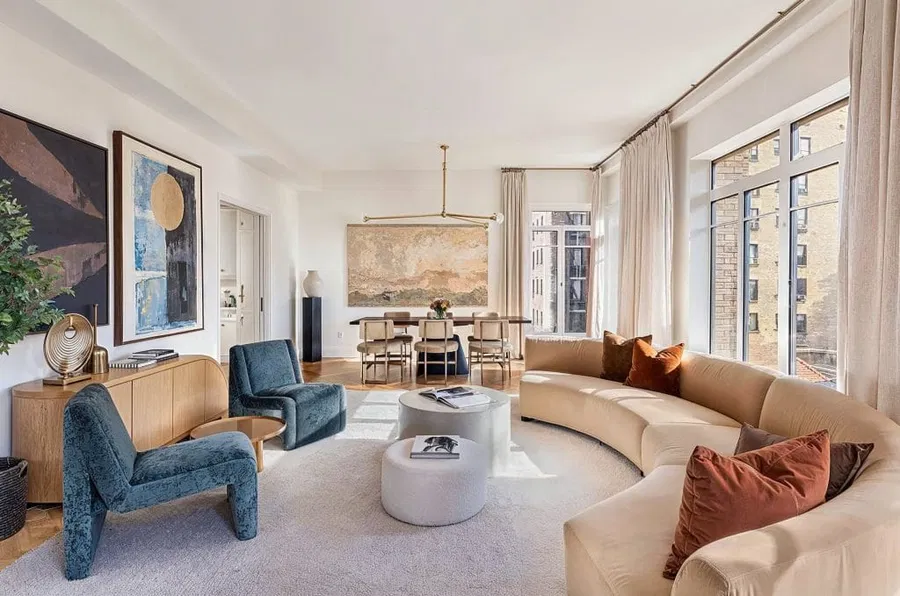Introduction: Why 2025 Is the Year to Craft Your Perfect Home
As we step into 2025, the world of interior design is witnessing a renaissance. Home design no longer revolves around fleeting trends, but rather a combination of personalization, functionality, sustainability, and timeless aesthetics. This is the year to elevate your living space, blending cutting-edge design elements with sustainable choices that contribute positively to the environment and your well-being.
Whether you are planning a complete renovation or just looking to refresh a few rooms, crafting your perfect home requires careful planning and a deep understanding of modern design principles. In this guide, we’ll walk you through the key aspects of interior design, from the fundamentals to the latest trends and technologies, so that you can create a space that reflects who you are, while also being environmentally conscious.
The Core Principles of Interior Design
Creating the perfect home begins with understanding the core principles that guide every great design. These principles are the foundation upon which all successful interior design is built. Let’s take a look at the four key principles that should shape your design approach:
-
Functionality
Functionality is the backbone of any well-designed space. No matter how beautiful your design is, if it doesn’t work well for you and your family’s daily needs, it’s not going to be sustainable in the long run. When planning your space, think about how the area will be used—whether it’s for relaxation, work, cooking, or entertaining—and make sure that each element of the design contributes to its functionality. -
Aesthetics
The aesthetic aspect of interior design is all about creating a visually pleasing environment. Your home should evoke emotions, inspire creativity, and make you feel at peace. This can be achieved through a careful selection of colors, textures, and layouts. Whether your style is minimalist, modern, or traditional, always ensure that the design elements work together cohesively to reflect your personality. -
Sustainability
Sustainability has become one of the most important aspects of interior design. In 2025, homeowners are increasingly aware of their environmental impact and are choosing eco-friendly materials, energy-efficient solutions, and sustainable practices to reduce their carbon footprint. From using recycled materials to investing in energy-efficient appliances, sustainability should be a priority in your design decisions. -
Emotional Connection
A home is more than just a physical space; it’s a place where memories are made, where families gather, and where you should feel a sense of comfort and belonging. Your interior design should reflect your lifestyle and personal story, making you feel at home in every room. Whether it’s through the use of family heirlooms, favorite colors, or personal artwork, it’s essential to create an emotional connection to the space.
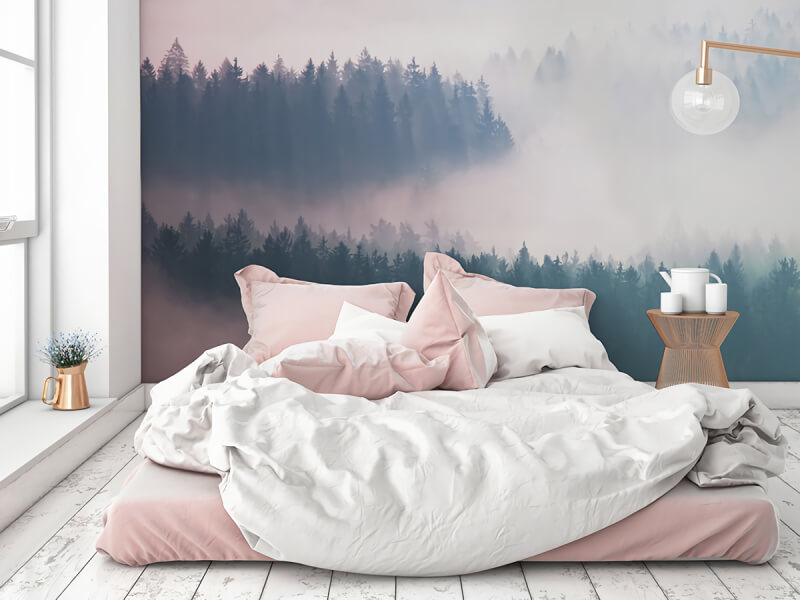
scandinavian
Why Sustainability Should Be a Priority in 2025
In 2025, the concept of sustainability in home design has evolved beyond just using eco-friendly materials. It’s about creating homes that are energy-efficient, that make minimal environmental impact, and that are designed with longevity in mind. From reducing waste through sustainable materials to implementing energy-saving technologies, sustainability should be an integral part of every design decision.
Key Benefits of Sustainable Design:
-
Reduced Environmental Impact: Sustainable homes have a smaller carbon footprint and contribute to the protection of natural resources.
-
Cost Efficiency: Energy-efficient designs can significantly lower utility bills over time.
-
Healthier Living Spaces: Eco-friendly materials, good ventilation, and non-toxic finishes contribute to a healthier indoor environment.
Sustainable Design Practices for 2025
1. Energy-Efficient Solutions
Incorporating energy-efficient solutions is one of the easiest and most impactful ways to make your home more sustainable. Here are a few simple upgrades to consider:
-
Energy-Efficient Windows: Windows are one of the largest sources of heat loss in a home. Opt for double-glazed or energy-efficient windows to maintain temperature control.
-
Smart Thermostats: These devices allow you to control the temperature of your home remotely, saving energy by adjusting settings based on your schedule.
-
LED Lighting: LED bulbs use a fraction of the energy of incandescent bulbs and last much longer.
2. Use of Recycled Materials
Recycled materials offer an eco-friendly alternative to traditional building materials. Not only are these materials often more affordable, but they can also add character and charm to your space. Here are some ways to incorporate recycled materials into your home design:
-
Reclaimed Wood: Reclaimed wood is perfect for furniture, flooring, or accent walls, adding a rustic touch to your home while being environmentally conscious.
-
Recycled Glass and Concrete: These materials are durable and sustainable options for countertops, backsplashes, and flooring.
3. Sustainable Furniture Choices
When it comes to furniture, sustainability is key. Choose pieces made from eco-friendly materials such as bamboo, reclaimed wood, or recycled metal. Also, consider opting for furniture that’s built to last, reducing the need for frequent replacements.
| Sustainable Material | Benefits | Ideal Application |
|---|---|---|
| Bamboo | Fast-growing, durable, renewable | Flooring, furniture |
| Recycled Glass | Stylish, eco-friendly, versatile | Countertops, backsplashes |
| Cork | Water-resistant, renewable, natural insulation | Flooring, wall panels |
Color Trends for 2025: A Modern Twist on Classic Hues
In 2025, we are seeing a shift toward earth-inspired colors that bring warmth, calmness, and sophistication to any space. Designers are moving away from bright, overpowering colors in favor of more muted, organic tones. Here are the key colors to look for in 2025:
-
Deep Greens: Representing nature and tranquility, deep greens are a calming choice for living rooms and bedrooms.
-
Rich Browns and Earth Tones: These colors evoke warmth and create a grounded, cozy atmosphere.
-
Soft Terracotta: This earthy hue works well in both rustic and modern interiors, adding a pop of color without overpowering a space.
-
Bold Accents: For those who love a bit of contrast, navy, mustard yellow, and dusty rose make excellent accent colors for walls, furniture, and decor.
Expert Insight:
“Color is one of the simplest yet most effective ways to transform a space. The trend toward earthy tones and natural hues in 2025 reflects a growing desire for balance, sustainability, and connection with nature.”
– Maria White, Color Specialist
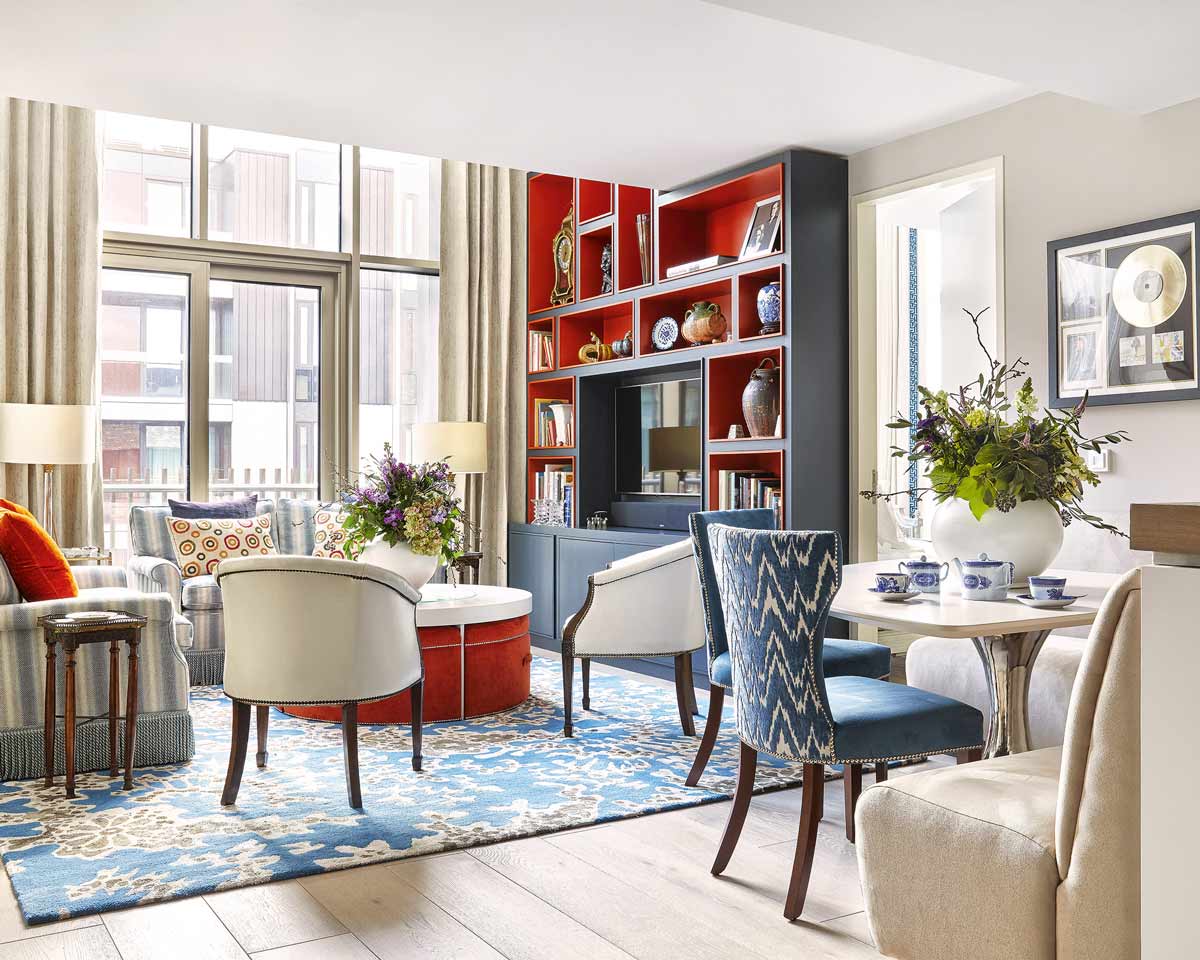
building a perfect home
Creating Flow and Functionality with Layouts
A great home layout ensures that spaces flow seamlessly from one to the next, making the home feel cohesive and efficient. In open-concept homes, it’s important to delineate different areas for specific activities. Whether it’s a work nook, reading corner, or entertainment space, these zones need to be clearly defined to make the most of the available space.
Some practical tips for layout design:
-
Open Spaces: If you have a larger home, consider an open-plan layout that connects the kitchen, dining, and living areas, which promotes easy communication and movement.
-
Smart Zoning: For smaller spaces, consider creating zones with furniture or different rug sizes to separate areas without walls.
-
Maximizing Vertical Space: Don’t forget to use vertical space in smaller rooms. Shelves, tall cabinets, and hanging planters can free up floor space and add visual interest.
The Role of Lighting in Interior Design
Lighting is one of the most important elements in home design, yet often overlooked. The right lighting can elevate the design of any room and create a sense of atmosphere. In 2025, lighting is more about creating layers, using various light sources to achieve a harmonious balance.
-
Natural Light: Maximize natural light by choosing light-colored walls, glass doors, and well-placed windows that allow sunlight to flood the room.
-
Task Lighting: Consider task lighting for activities like reading, cooking, or working.
-
Ambient Lighting: Use overhead lights or chandeliers for general room lighting.
-
Accent Lighting: Use accent lighting to highlight specific design features or artworks.
Conclusion: Crafting a Home That Works for You
The first step in designing your perfect home begins with understanding the key principles of design, from functionality to sustainability. As we move further into 2025, sustainability, color, and innovative technologies are at the forefront of interior design. By incorporating these elements into your home, you’ll create a space that not only looks good but also feels right.
In the next section of this guide, we’ll dive deeper into the selection of furniture, decor, and additional design elements that will bring your vision to life.
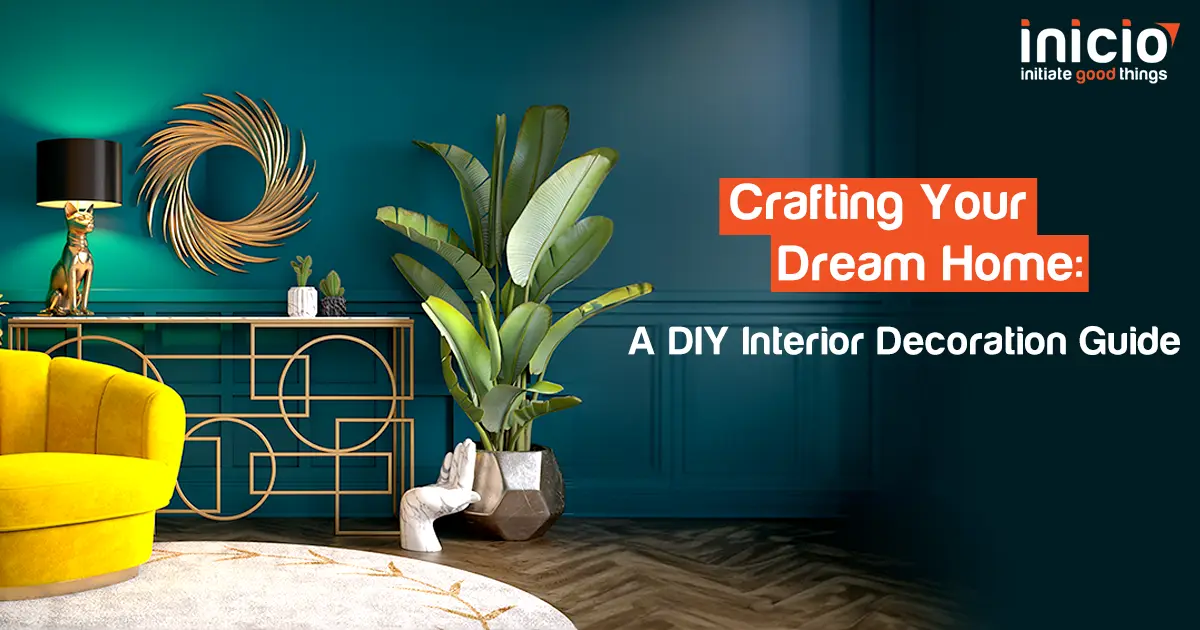
crafting-your-dream-home
Introduction to Part 2: Bringing Your Vision to Life
Now that we’ve covered the foundational elements of interior design—functionality, aesthetics, sustainability, and emotional connection—it’s time to dive deeper into the specifics of crafting the perfect home. In Part 2, we’ll explore the exciting aspects of furniture selection, home decor, and styling techniques that will help you refine your space. Whether you’re furnishing a single room or designing an entire home, the right furniture and decor choices will bring your vision to life and complete the atmosphere you’re striving to create.
From choosing statement pieces to layering textures and colors, this section will guide you in making informed decisions that align with your overall design goals.
The Art of Furniture Selection
Furniture is one of the most significant investments you’ll make when designing your home. It not only plays a functional role but also sets the tone for the entire space. To create a home that feels cohesive and comfortable, you must select pieces that reflect your personal style while meeting practical needs. Here are some essential tips for choosing the right furniture:
1. Choose Pieces that Reflect Your Style
Before purchasing any furniture, it’s important to identify your personal style. Do you prefer sleek modern designs, rustic farmhouse charm, or perhaps a blend of eclectic styles? Understanding your aesthetic will guide you toward the right materials, colors, and shapes.
-
Modern and Minimalist: Think clean lines, neutral colors, and functional designs. Focus on simplicity and let natural light and texture speak for themselves.
-
Traditional and Classic: Rich wood finishes, intricate patterns, and elegant lines define this style. Vintage pieces, antique furniture, and luxurious fabrics work well here.
-
Industrial: For an urban, raw look, consider metal furniture with a distressed finish, paired with exposed wood. Leather and steel are your go-to materials.
2. Prioritize Comfort and Functionality
While design is important, comfort and practicality should never be overlooked. Here are a few key considerations:
-
Seating: If you’re purchasing a sofa or armchairs, think about how much seating space you need for your family or guests. Look for pieces that provide both comfort and durability, and ensure that they fit within the scale of the room.
-
Storage Solutions: Multifunctional furniture such as storage ottomans, coffee tables with hidden compartments, and bookshelves that double as room dividers are great for smaller spaces.
-
Ergonomics: Whether it’s a desk chair, dining chairs, or kitchen stools, make sure the furniture supports good posture and is suitable for long-term use.
3. Consider Sustainable Materials
In line with 2025’s sustainability focus, opt for furniture made from eco-friendly materials. Here are some sustainable options:
-
Bamboo: A highly renewable resource, bamboo is both sturdy and stylish. It’s perfect for everything from flooring to furniture.
-
Reclaimed Wood: Furniture made from reclaimed wood has unique character and history, making each piece one-of-a-kind.
-
Natural Fabrics: Upholstery made from organic cotton, hemp, or linen is more eco-friendly than synthetic fabrics, and it’s often more breathable and durable.
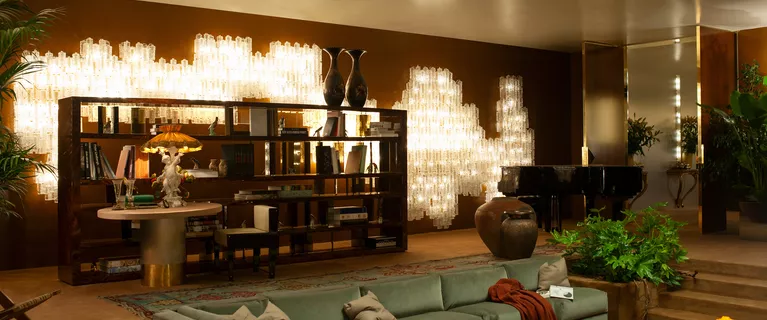
Key Home and Decor Trends for 2025
Styling Your Space: The Power of Textures and Colors
Once you’ve selected your furniture, it’s time to turn your attention to styling your space. The key to an inviting and well-balanced room lies in how you combine colors, textures, and decorative elements. In this section, we’ll discuss how to create a harmonious environment using these design tools.
1. Layering Textures for Depth
Texture adds depth and interest to a room, preventing it from feeling flat or one-dimensional. Think of texture as a way to create tactile interest that draws people in. Here are a few tips:
-
Fabrics: Mix and match various textiles like velvet cushions, linen curtains, wool throws, and leather accents to create a tactile contrast.
-
Wood: Incorporating wood into your design—whether through furniture or flooring—creates a warm, organic feel that balances other materials like glass or metal.
-
Metal and Glass: These reflective materials can introduce a sleek, modern look, but they should be balanced with softer textures to avoid a cold, sterile environment.
2. Play with Color to Create Mood
Color is one of the most powerful tools in interior design. It can influence emotions, define a room’s personality, and enhance the functionality of a space. Here’s how to use color effectively:
-
Neutral Palettes: For a calm, serene space, opt for neutrals like whites, grays, and beiges. These colors work well in bedrooms and living rooms, creating a soothing atmosphere.
-
Accent Colors: Add pops of color through furniture, rugs, and artwork. Bold accents like navy blue, mustard yellow, or emerald green can energize a space without overwhelming it.
-
Monochromatic Scheme: A monochromatic color scheme uses varying shades of the same color. This creates a harmonious and soothing look, ideal for spaces meant for relaxation, like bedrooms and lounges.
3. Experiment with Patterns
Patterns are a great way to add personality to your home. Whether you go for stripes, florals, or geometric patterns, combining patterns within your design can create a visually interesting, yet balanced environment. Here’s how to incorporate them:
-
Accent Pillows and Rugs: These are easy and affordable ways to experiment with bold patterns. Mix patterns of varying sizes to create depth.
-
Wall Art and Wallpaper: Patterns can also be incorporated through wall art, textiles, and wallpapers. Choose a statement wall with a bold pattern, or keep it subtle with soft, textured wallpaper.
Decorating with Purpose: Personal Touches and Statement Pieces
Once your furniture and core design elements are in place, it’s time to add personal touches that make your space uniquely yours. Decor pieces like artwork, vases, and sculptures bring character and charm to any room. Here’s how to decorate with intention:
1. Choose Art that Resonates
Artwork can define the mood of a room, whether it’s a large statement piece or a collection of smaller paintings. When selecting art, look for pieces that resonate with you personally. It could be a painting from a favorite artist, a photograph from a memorable trip, or even abstract art that complements your space’s color scheme.
2. Display Personal Collections
Whether it’s a collection of books, vintage finds, or travel souvenirs, displaying items that hold sentimental value adds personality and depth to your space. Showcase these items thoughtfully by grouping them in dedicated spaces like bookshelves, side tables, or display cabinets.
3. Statement Furniture Pieces
Sometimes, the right furniture piece can make all the difference in a room. A bold-colored armchair, a vintage coffee table, or an intricately designed chandelier can act as a statement piece that elevates the design of an entire room. These items should be chosen with care, balancing the overall design but standing out as focal points.
Tables and Data: Choosing the Right Materials and Furniture
To assist you in making informed decisions about the materials and types of furniture that best suit your design, here is a table summarizing the most popular materials and their ideal applications.
| Material | Best Use | Key Benefits |
|---|---|---|
| Reclaimed Wood | Furniture, Flooring, Accents | Sustainable, unique, durable |
| Bamboo | Furniture, Flooring, Accessories | Renewable, strong, eco-friendly |
| Glass | Tables, Shelving, Light Fixtures | Sleek, modern, easy to clean |
| Velvet | Upholstery, Cushions, Curtains | Luxurious, rich texture, soft touch |
| Marble | Countertops, Tables, Flooring | Timeless elegance, durable, sophisticated |
| Cork | Flooring, Wall Panels, Furniture | Renewable, soundproof, stylish |
Conclusion: Creating a Space that Reflects You
In Part 2 of this guide, we’ve explored how to select the right furniture, layer textures, play with colors, and personalize your space with meaningful decor. The key to successful interior design is not only choosing pieces that are functional but also adding a personal touch that makes your home feel like an extension of yourself.
As you move forward in crafting your dream home, remember that the journey is about blending comfort, style, sustainability, and emotion. In the final part of our guide, we’ll discuss more advanced styling tips, integrating the latest home technology, and creating a space that evolves with you.
Stay tuned for Part 3!
Call to Action
Are you ready to take the next step in your design journey? Start thinking about the furniture that reflects your style and the decor that will make your home feel personal and unique.
Introduction to Part 3: Bringing Your Home to Life
In the final part of our journey to crafting the perfect home, we’ll dive into the advanced aspects of interior design. This includes fine-tuning your space with stylish finishing touches, incorporating the latest in home technology, and ensuring that your home is both functional and sustainable. In this section, we’ll focus on how to make the final decisions that can elevate your home to a truly stunning level.
1. Advanced Styling Tips: Making Every Detail Count
Now that your furniture is in place and your space is looking great, it’s time to focus on the finer details that will elevate the room to the next level. Styling is where you can get creative, layering elements that add sophistication, personality, and that extra wow factor. Here are a few advanced styling techniques to help you refine your space:
1.1. Lighting: Setting the Mood
Lighting is one of the most powerful tools in interior design. It can completely transform the look and feel of a room. Effective lighting is about more than just adding overhead fixtures. Here are the key elements to consider:
-
Layered Lighting: Combine ambient (general), task (specific), and accent (highlighting design features) lighting for a well-balanced atmosphere.
-
Statement Lighting Fixtures: Install eye-catching chandeliers, pendant lights, or sconces to serve as both functional and artistic pieces.
-
Smart Lighting: Incorporating smart bulbs that adjust according to your needs or moods adds both convenience and an advanced touch.
1.2. Mixing Old and New
Blending vintage or antique pieces with modern furniture is an effective way to create a space that feels timeless and unique. Here’s how to do it:
-
Vintage Art with Modern Furniture: A vintage painting can add personality and richness when placed against sleek, contemporary furniture.
-
Mixing Textures: Combine smooth modern furniture with a vintage rug or reclaimed wood accents to create a layered, well-balanced design.
1.3. Seasonal Decor
Keep your space fresh by updating the decor according to the season. Use light, bright textiles in summer (think linen cushions, sheer curtains) and richer, cozier materials like velvet and wool for winter. Changing small elements like throw blankets, cushions, and rugs can drastically alter a room’s ambiance.
2. Integrating Smart Home Technology
As homes become smarter, integrating technology that enhances convenience, efficiency, and sustainability has become essential. Here are some ways to introduce smart technology into your home design:
2.1. Smart Thermostats and Lighting
Modern smart thermostats like the Nest Learning Thermostat allow you to control your home’s temperature with your phone, helping you maintain comfort while reducing energy consumption. Similarly, smart lighting systems like Philips Hue allow you to customize your lighting based on time of day, mood, or activity.
2.2. Voice-Activated Assistants
Voice-controlled systems such as Amazon Alexa or Google Home can help you control lights, music, security systems, and even appliances without lifting a finger. These systems integrate seamlessly into your home’s design, keeping the space organized while improving convenience.
2.3. Smart Appliances for Efficiency
From smart refrigerators that help you plan meals to ovens that can be controlled remotely, smart appliances are revolutionizing the kitchen. Choosing energy-efficient appliances that also offer smart features can greatly reduce your carbon footprint while improving your daily routines.
3. Sustainable Living: Making Eco-Friendly Choices
Sustainability is no longer just a trend; it’s a necessity for the future. Making eco-conscious decisions in your home design is a powerful way to reduce your environmental impact while creating a healthier living space. Here are some key areas to focus on for a sustainable home:
3.1. Sustainable Materials for Furniture and Decor
As we mentioned earlier, choosing sustainable materials like reclaimed wood, bamboo, and organic cotton not only helps protect the planet but can also give your space a unique, natural look. Here are some specific options:
-
Reclaimed Wood: By repurposing old wood from barns, factories, and other buildings, you reduce waste and contribute to a sustainable future.
-
Cork: This renewable material is becoming increasingly popular for flooring and wall coverings due to its durability and eco-friendliness.
-
Recycled Glass and Metal: Incorporating recycled glass and metal into decor items or furniture pieces helps minimize the need for new resources.
3.2. Energy Efficiency
Beyond appliances, there are several ways to make your home more energy-efficient:
-
Double-Glazed Windows: Installing energy-efficient windows helps regulate indoor temperatures and reduce energy bills.
-
LED Lighting: Use energy-efficient LED bulbs that last longer and consume less electricity.
-
Solar Panels: If feasible, installing solar panels can significantly reduce your home’s reliance on non-renewable energy sources.
3.3. Indoor Air Quality
To improve the overall health of your home, focus on maintaining good air quality. Plants such as peace lilies, spider plants, and snake plants are natural air purifiers, helping to reduce indoor toxins. Also, choose paints and finishes that are low in volatile organic compounds (VOCs) to avoid exposing yourself to harmful chemicals.
4. Final Touches: Accessorizing with Purpose
After you’ve curated your furniture, art, and decor, accessorizing is the final step in personalizing your space. However, the key is to accessorize with purpose. Every item should serve a dual function—both enhancing the room’s aesthetics and providing practicality. Here’s how to do it right:
4.1. Rugs and Textiles
Rugs can define a space, anchor furniture, and add comfort. Choose high-quality rugs that complement the color palette and layout of your space. Layering rugs is another stylish way to add dimension, especially in larger rooms or areas with different zones.
4.2. Personal Collectibles
Incorporate your personal collections into your home’s design. Whether it’s books, vintage finds, or travel mementos, thoughtful placement of these items adds meaning to your space and reflects your personality.
4.3. Greenery and Indoor Gardens
Adding greenery to your home is not only an aesthetic choice but also beneficial for your health. Consider creating an indoor garden or placing potted plants in every room. A small herb garden in the kitchen or a larger ficus tree in the living room can help to purify the air and add vibrancy to the space.
5. Conclusion: Living Your Dream Every Day
As we reach the final part of this guide, it’s important to remember that your home should be a reflection of who you are. Crafting the perfect home is not just about filling it with beautiful furniture and decor but creating a space that nurtures you, supports your daily life, and brings you joy.
Interior design is about balance—combining function with aesthetics, personal touches with universal principles, and sustainability with luxury. Whether you’re renovating a room or designing from scratch, always keep your unique needs and lifestyle in mind.
In conclusion, creating your perfect home is a journey—one that takes time, effort, and attention to detail. But with the right tools, vision, and resources, you’ll be able to create a space that you can truly call your own.
FAQs:
Q1: How do I know which interior design style is right for me?
A1: Start by identifying your lifestyle and preferences. Do you like simplicity and minimalism, or do you prefer a more eclectic mix? Visit design websites, create a Pinterest board, and pay attention to the elements that catch your eye.
Q2: How do I create a budget for home design?
A2: Set clear priorities and allocate funds for essential items like furniture and lighting first. Then, add more decorative elements like art and accessories. Don’t forget to factor in hidden costs such as shipping, installation, or maintenance.
Q3: Can I mix different design styles in one room?
A3: Yes! But balance is key. If you combine different styles, try to find a common thread (e.g., color palette, material choice) to create harmony.
Q4: How can I make a small space feel larger?
A4: Use light colors, mirrors, and multifunctional furniture. Keep the space uncluttered and allow natural light to flow freely throughout.
Call to Action:
Now that you’ve learned the steps and principles of designing your dream home, it’s time to start the transformation. Begin with a plan, make thoughtful choices, and create a space that reflects your style, needs, and values. Happy decorating!


